Inbox and Environment News: Issue 314
May 28 - June 3, 2017: Issue 314
Avalon Boomerang Bags: An Idea That's Spreading To Stop Plastic Bag Use
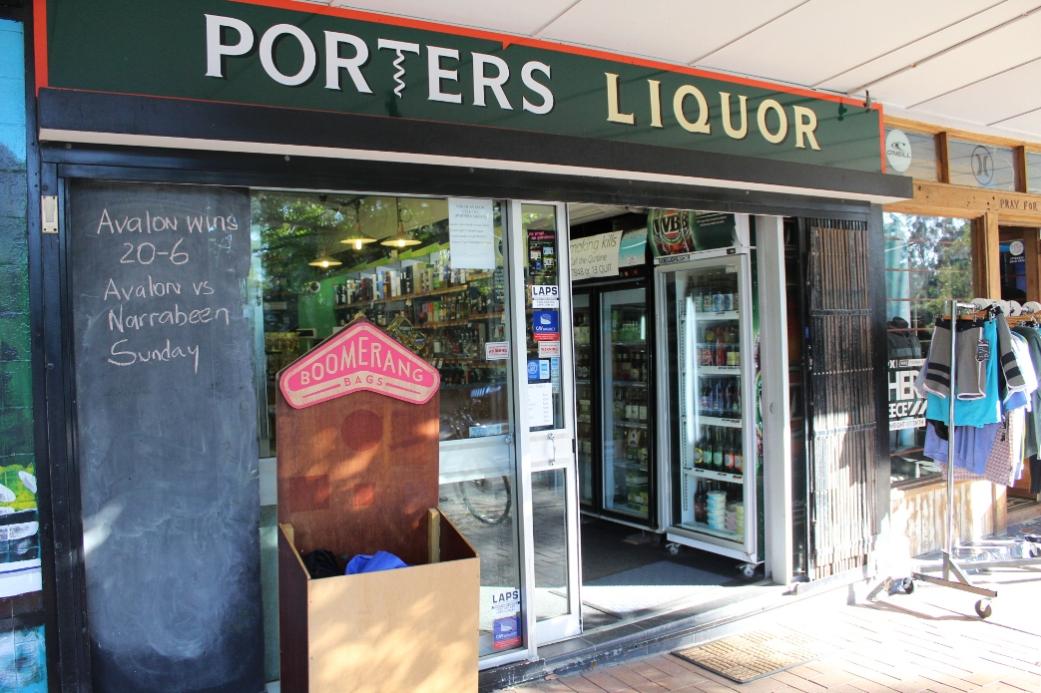 Avalon Boomerang Bags - now at North Avalon shops - A J Guesdon photo, 25.5.2017
Avalon Boomerang Bags - now at North Avalon shops - A J Guesdon photo, 25.5.2017

Avalon Boomerang Bags
Tuesdays
11am-5pm @ sewcraft cook Unit 20/14 Polo Ave Mona Vale
Boomerang Bags is a bag-share initiative involving the installation of a number of ‘Boomerang Bag’ boxes throughout any given business district, shopping centre, street or market. Each box is stocked with re-useable bags for customers to borrow if they have forgotten to bring their own.
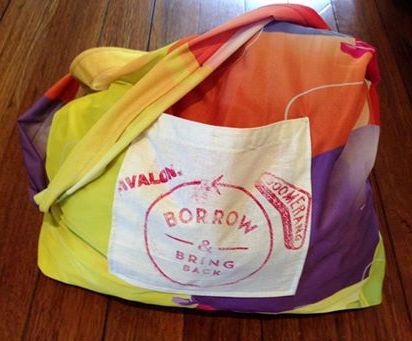
Unlike the traditional purchase-and-keep approach, Boomerang Bags are free, and local community members are responsible for returning the bags once they’re no longer required. The availability of free re-useable bags reduces the reliance of local businesses to supply bags to all customers, and encourages a mentality of re-use among local communities, thereby reducing the amount of plastic bag material entering our landfills and waterways.
So who makes the Boomerang Bags? Well, you do! Boomerang Bags are made by local communities for local communities, and are sewn from recycled and donated materials.
Get in touch if you'd like to donate materials, join us making bags, or implement Boomerang Bags in your own local area!

They're Back! NSW Whale Watching Season Begins In Earnest
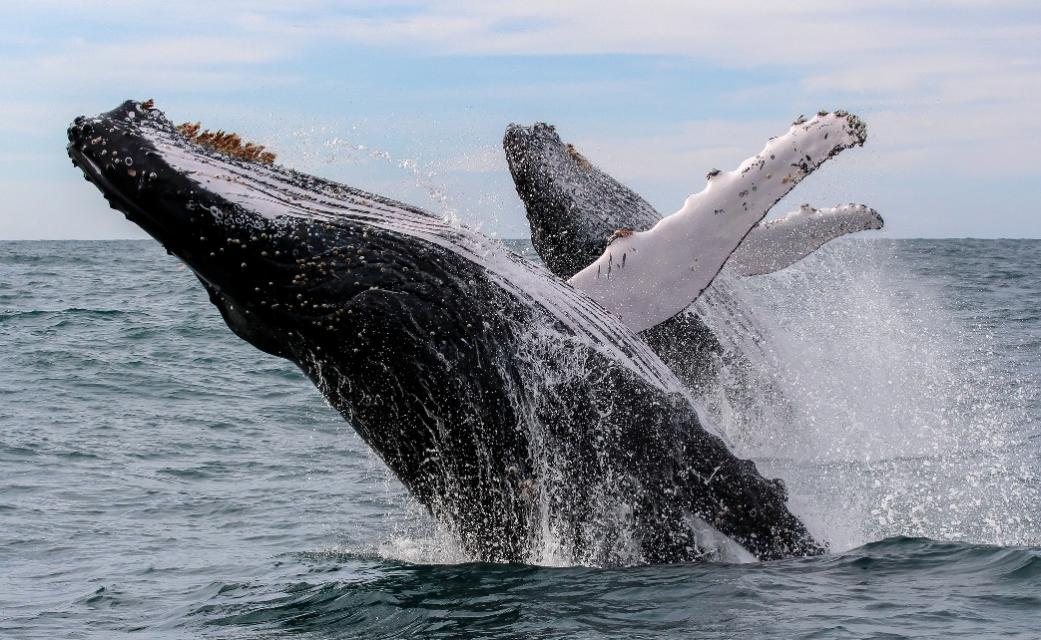 Humpbacks breaching - photo credit Jodie Lowe, courtesy OE&H
Humpbacks breaching - photo credit Jodie Lowe, courtesy OE&H

They're Back! NSW Whale Watching Season Begins In Earnest
26 May 2017: NPWS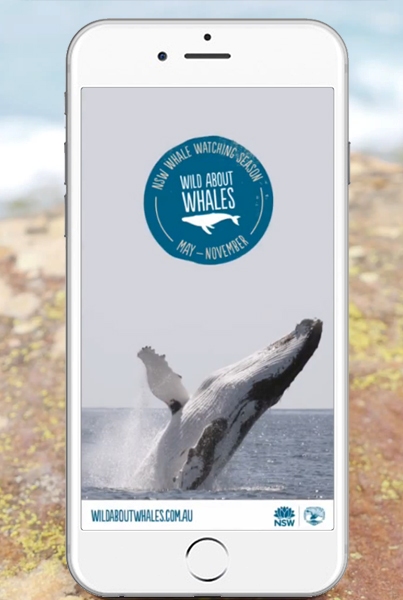 Migrating whales have already been spotted along the NSW coast from Eden to Kingscliff as the 2017 whale watching season kicks off in earnest.
Migrating whales have already been spotted along the NSW coast from Eden to Kingscliff as the 2017 whale watching season kicks off in earnest.
Experts from the Office of Environment and Heritage (OEH) are encouraging NSW residents to head to their nearest coastal national park to seek out a vantage point to see the whales on their annual migration north.
Senior Wildlife Officer at OEH Susan Crocetti said that from now and all throughout June and July, keen whale watchers are likely to see larger groups of humpback whales as they move along the NSW coastline towards warmer waters for breeding.
"We expect more than 30,000 humpback whales will make the migration this year, and they're already underway heading north," said Ms Crocetti.
"We will see them heading southwards, many with their newborn calves, during spring from September through to November, travelling at a much more leisurely pace than on their northward journey.
"NSW has over 860 national parks and reserves, and many of these are situated on the coast and provide excellent viewing opportunities to catch a glimpse of these gentle giants.
"If the spectacular sight of whales breaching, blowing and tail-slapping is on your bucket list, now is your chance to tick it off.
"Humpback whales are an incredible success story, having recovered as a species from the brink of extinction less than six decades ago, to the point where they can now be readily sighted in NSW waters between mid-June and December.
"There is a high chance you can see the whales from any location that offers ocean views.
"Some of our top vantage points are listed on the Wild About Whales website. Headlands in particular make a great vantage point to spot the whales without disturbing them," she said.
Vantage points in national parks usually also offer visitor facilities like a viewing platform or a walking track, and nearby picnic facilities and carparks.- find out more about the best whale watching vantage spots along the NSW coast, to learn about whale behaviours and different species of whales, and to download the free Wild About Whales mobile app (to log and view the most up-to-date whale sightings near you), go to wildaboutwhales.com.au.
- Share photos and experiences of your coastal whale adventure on the Wild About Whales Facebook page (facebook.com/WildAboutWhales) and learn how others are making the most of the whale watching season.
- You can also join in the conversation and share your whale sightings on Twitter with the @wildaboutwhales community.
Stranded, entangled, or sick whales should be reported immediately to the NSW National Parks and Wildlife Service Environment Line on 131 555 or ORRCA Whale and Dolphin Rescue on (02) 9415 3333 (24 hours hotline).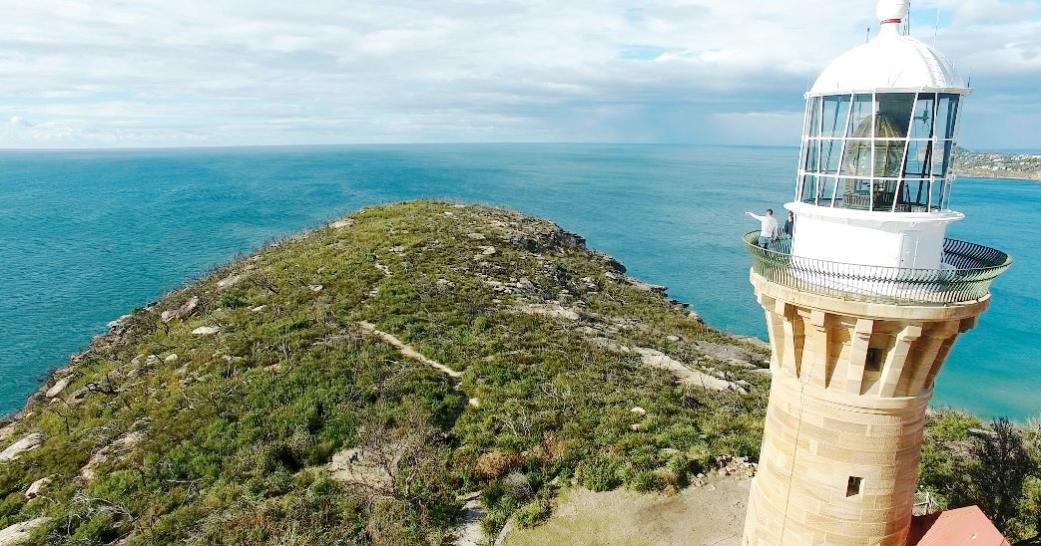 Barrenjoey Lighthouse - just one spectacular place to watch the whales go by from - photos courtesy OE&H
Barrenjoey Lighthouse - just one spectacular place to watch the whales go by from - photos courtesy OE&H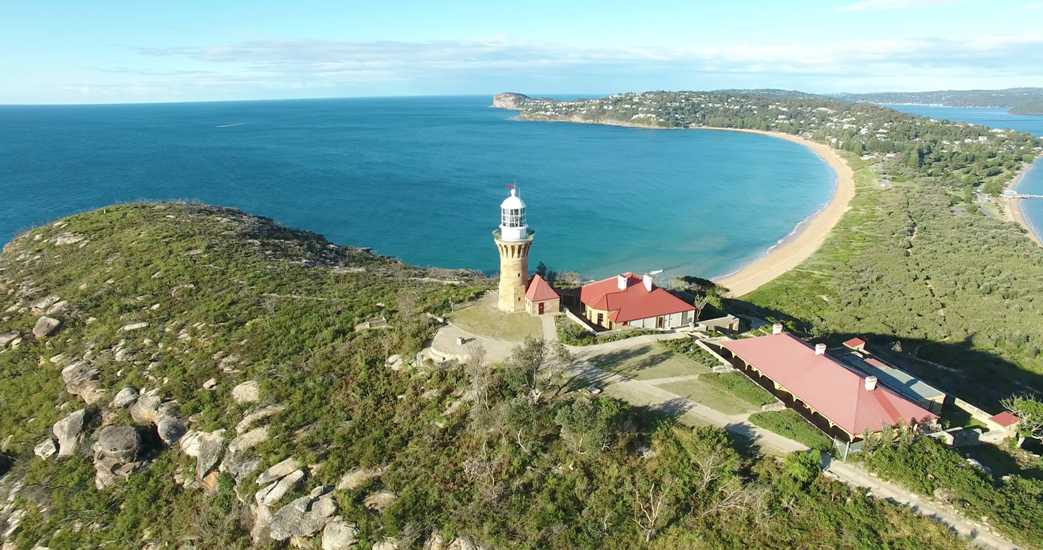
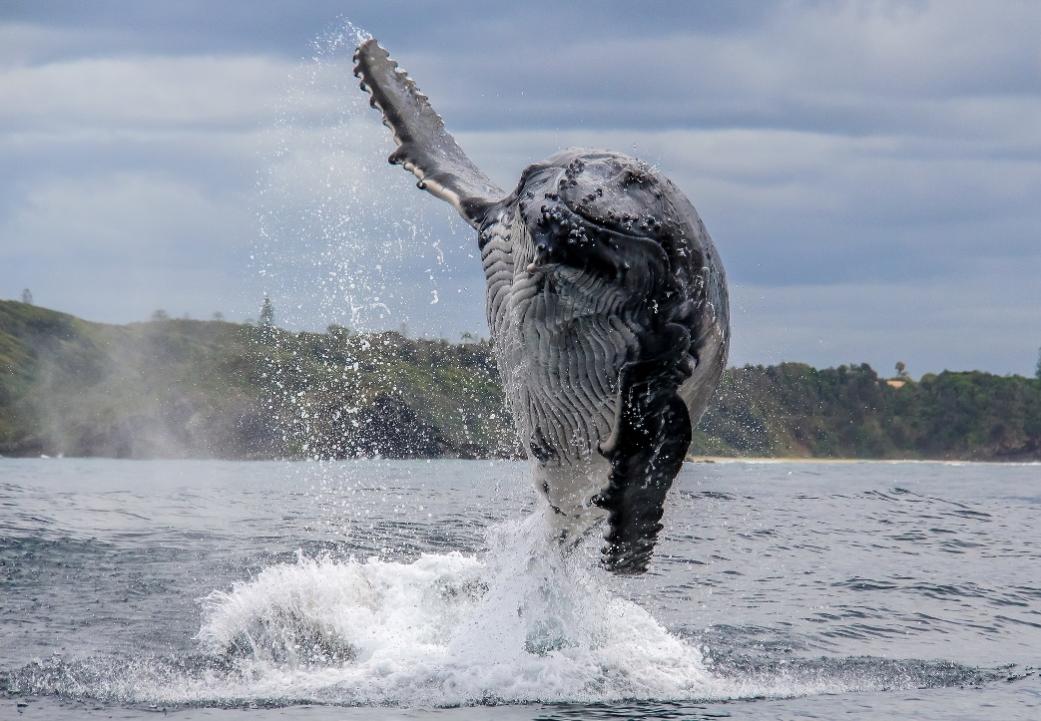 Humpback breaching - photo credit Jodie Lowe, courtesy OE&H
Humpback breaching - photo credit Jodie Lowe, courtesy OE&H
 Migrating whales have already been spotted along the NSW coast from Eden to Kingscliff as the 2017 whale watching season kicks off in earnest.
Migrating whales have already been spotted along the NSW coast from Eden to Kingscliff as the 2017 whale watching season kicks off in earnest.- find out more about the best whale watching vantage spots along the NSW coast, to learn about whale behaviours and different species of whales, and to download the free Wild About Whales mobile app (to log and view the most up-to-date whale sightings near you), go to wildaboutwhales.com.au.
- Share photos and experiences of your coastal whale adventure on the Wild About Whales Facebook page (facebook.com/WildAboutWhales) and learn how others are making the most of the whale watching season.
- You can also join in the conversation and share your whale sightings on Twitter with the @wildaboutwhales community.



Retracing Steps Of Famous Botanist Leads To Rare Plant Rediscovery
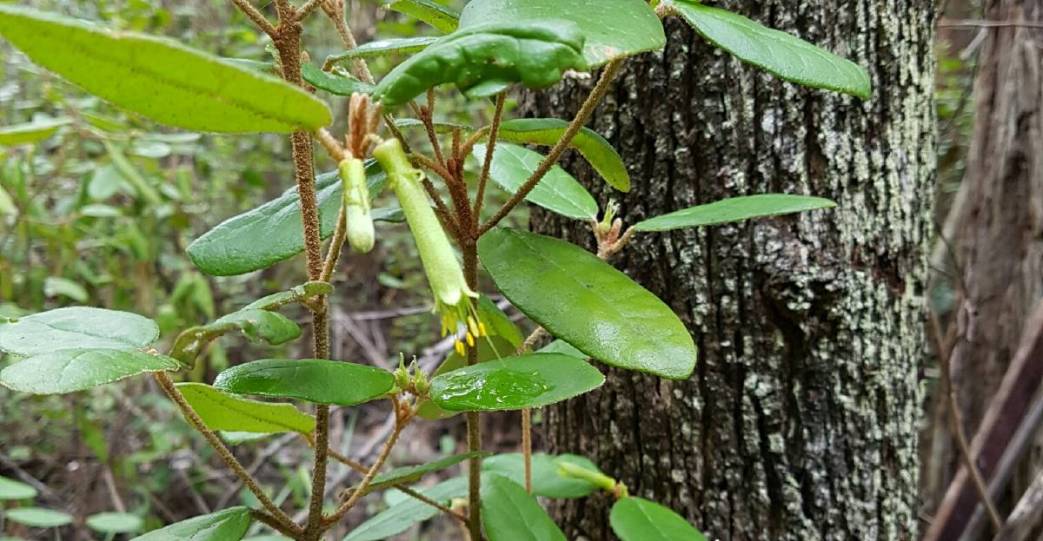 Correa lawrenciana var genoensis - Photo by Dave Albrecht
Correa lawrenciana var genoensis - Photo by Dave Albrecht

Retracing Steps Of Famous Botanist Leads To Rare Plant Rediscovery
19 May 2017: NSW Department of Environment and Heritage (OE&H)Rare plants that have not been seen in more than a decade have been rediscovered by four botanists in South East Forests National Park near Bombala.
The group of plant scientists from the Office of Environment and Heritage (OEH), The National Parks and Wildlife Service (NPWS), the Australian National Botanic Gardens and the Australian National Herbarium embarked on the field expedition last month and were delighted to find four threatened species.
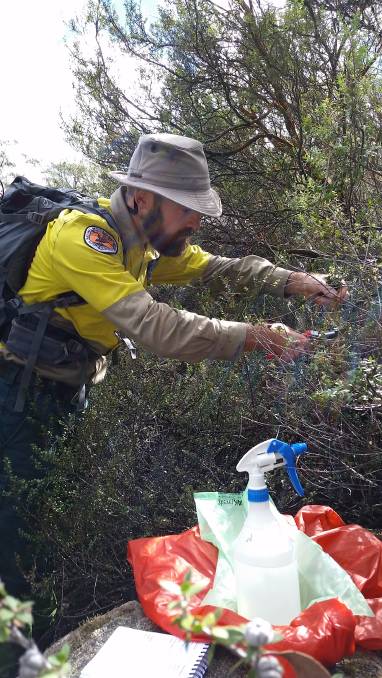 Dr Keith McDougall Senior Threatened Species Officer at OEH said the trip involved seven hours of trekking through steep rocky gorges and dense undergrowth in a remote part of the national park.
Dr Keith McDougall Senior Threatened Species Officer at OEH said the trip involved seven hours of trekking through steep rocky gorges and dense undergrowth in a remote part of the national park.
"We were absolutely thrilled to find these plants, particularly the endangered Genoa River Correa that not been seen in decades," said Dr McDougall.
"We set out hoping we would re-discover these plants but to actually seeing them thriving in the wild was very exciting.
"We assessed the health of the plants, monitored for potential threats and collected seed to build an insurance population," Dr McDougall added.
Joe McAuliffe from the Australian National Botanic Gardens said the Genoa River Correa was found close to the river in a moist, shady spot.
"Despite the species not being recorded in NSW since 1999, we were able to clearly identify it from its greenish tubular flowers and oval-shaped, hairy leaves," Mr McAuliffe said.
"Cuttings were taken from the plants and will be grown at the Australian National Botanic Gardens in Canberra, establishing a living collection and essentially insurance against extinction," Mr McAuliffe said.
Right: Carefully taking cuttings to build an insurance population - OE&H Photo
The two day field trip also had a historical element said Dave Albrecht from the Australian National Herbarium.
"We trekked close to the steps travelled by the famous botanist Baron von Mueller, who discovered the Genoa River Correa in 1860," Mr Albrecht said.
"We stayed overnight at the same cattle station in Nungatta where Mueller visited more than 150 years ago and looked out over the same landscape.
Dean Ansell, Senior Project Officer at the NPWS said collaboration among organisations is vital for today's conservation work.
"It is our collective responsibility to work together and in this case, get our hands dirty, to try to secure these species' survival.
"We're planning on returning to the sites in Spring 2017 to continue exploring and to set up a monitoring program for the long-term protection of these species.
Species re-discovered in the region during this expedition included the Genoa River Correa, Deane's Boronia, Pomaderris Cotoneaster and Nalbaugh Nematolepis.
The expedition and associated conservation work is funded by the NSW Government's $100 Million Saving our Species program that aims to secure NSW's threatened species in the wild for the next 100 years.
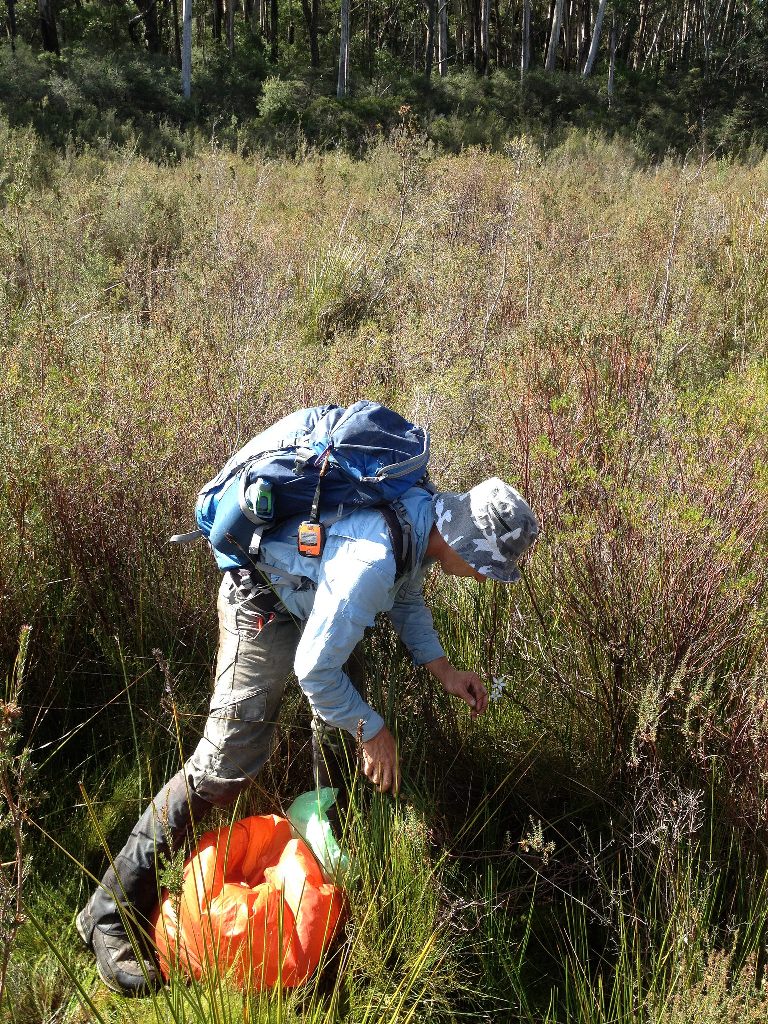
Joe McAuliffe Australian National Botanic Gardens collecting - OE&H Photo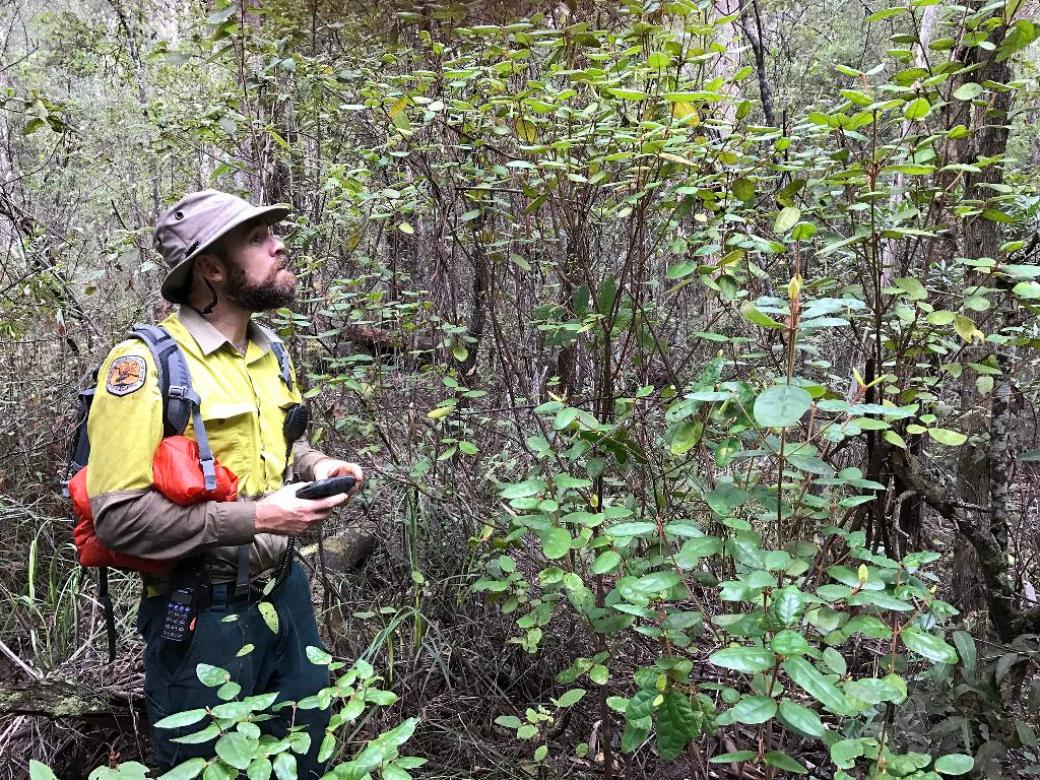 NPWS Dean Ansell with the Genoa River Correa - photo courtesy OE&H
NPWS Dean Ansell with the Genoa River Correa - photo courtesy OE&H
 Dr Keith McDougall Senior Threatened Species Officer at OEH said the trip involved seven hours of trekking through steep rocky gorges and dense undergrowth in a remote part of the national park.
Dr Keith McDougall Senior Threatened Species Officer at OEH said the trip involved seven hours of trekking through steep rocky gorges and dense undergrowth in a remote part of the national park.

Baron Sir Ferdinand Jacob Heinrich Von Mueller
Baron Sir Ferdinand Jacob Heinrich von Mueller, KCMG (German: Müller) (30 June 1825 – 10 October 1896) was a German-Australian physician, geographer, and most notably, a botanist. He was appointed government botanist for the then colony of Victoria by Governor Charles La Trobe in 1853, and later director of the Royal Botanic Gardens, Melbourne. He also founded the National Herbarium of Victoria. He named many Australian plants.
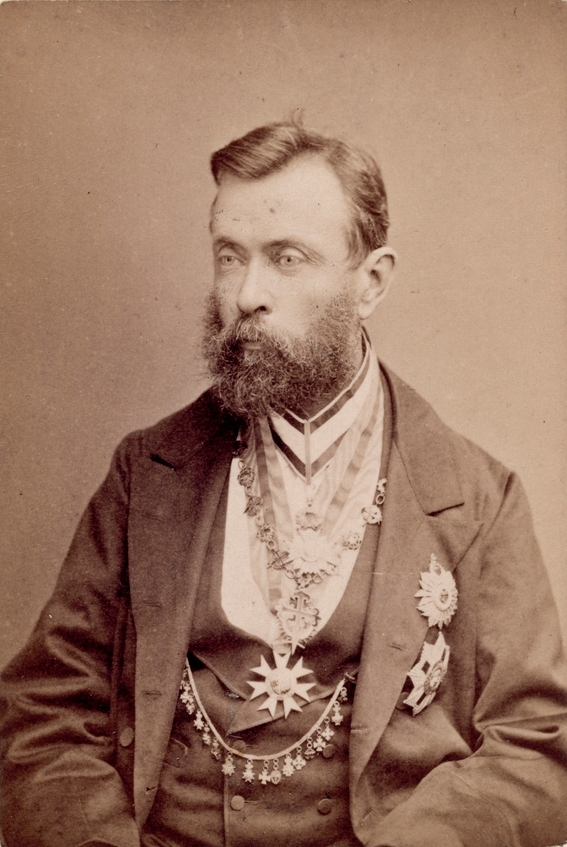 Mueller was born at Rostock, in the Grand Duchy of Mecklenburg-Schwerin. After the early death of his parents, Frederick and Louisa, his grandparents gave him a good education in Tönning, Schleswig. Apprenticed to a chemist at the age of 15, he passed his pharmaceutical examinations and studied botany under Professor Ernst Ferdinand Nolte (1791–1875) at Kiel University. In 1847, he received his degree of Doctor of Philosophy from Kiel for a thesis on the plants of the southern regions of Schleswig.
Mueller was born at Rostock, in the Grand Duchy of Mecklenburg-Schwerin. After the early death of his parents, Frederick and Louisa, his grandparents gave him a good education in Tönning, Schleswig. Apprenticed to a chemist at the age of 15, he passed his pharmaceutical examinations and studied botany under Professor Ernst Ferdinand Nolte (1791–1875) at Kiel University. In 1847, he received his degree of Doctor of Philosophy from Kiel for a thesis on the plants of the southern regions of Schleswig.
Mueller's sister Bertha had been advised to seek a warmer climate for her health, and the great botanist Ludwig Preiss, who had recently returned from Perth, recommended Australia, so in 1847, Mueller and his two surviving sisters sailed from Bremen. While still on the ship, he reportedly fished his first plants out of the water to analyse them.
He arrived at Adelaide on 18 December 1847 and found employment as a chemist with Moritz J. Heuzenroeder, in Rundle Street. He was an inveterate explorer, walking alone to Mount Arden and Mount Brown during his first year. Shortly afterwards, he obtained 20 acres (81,000 m2) of land not far from Adelaide in the Bugle Ranges, and had a cottage built there. He moved there with his sister Clara, intending to start a farm, but after a few months, he returned to his former employment.
Mueller thought to open a chemist's shop in the gold diggings, so in 1851, he moved to Melbourne, capital of the new colony of Victoria. He had contributed a few papers on botanical subjects to German periodicals, and in 1852, sent a paper to the Linnean Society of London on "The Flora of South Australia", thus beginning to be well known in botanical circles.
Mueller was appointed government botanist for Victoria by Governor Charles La Trobe in 1853, a post that was newly created for him. He examined its flora, especially the Alpine vegetation of Australia, which was previously unknown. He explored the Buffalo Ranges, then went to the upper reaches of the Goulburn River and across Gippsland to the coast. The neighbourhoods of Port Albert and Wilsons Promontory were explored, and the journey of some 1,500 miles (2,400 km) was completed along the coast to Melbourne
In the same year, he established the National Herbarium of Victoria, which can still be visited today. It has many plants from Australia and abroad, many of which were collected by Mueller. Since its earliest days, the Royal Botanic Gardens is involved in plant research and identification. This is done primarily through the National Herbarium of Victoria, which is based at the Gardens. The Herbarium is also home to the State Botanical Collection, which includes over 1.2 million dried plant specimens, and an extensive collection of books, journals and artworks. Research findings are published in the journal Mulleria, which is a scientific representation of the work done in the Gardens in any one year. More recently, the Australian Research Centre for Urban Ecology has been established to look at plants which grow in urban environments specifically.
Also, his large private library was transferred to the government of Victoria in 1865 and is incorporated into the library of the herbarium in Melbourne.
Then, as a phytographic naturalist, he joined the expedition sent out under Augustus Gregory by the Duke of Newcastle, Secretary of State for the colonies. He explored the Victoria River and other portions of North Australia, was one of the four who reached Termination Lake in 1856, and accompanied Gregory's expedition overland to Moreton Bay. Mueller, for his part, found nearly 800 species in Australia new to science. He published in this year his Definitions of Rare or Hitherto Undescribed Australian Plants.
From 1854 to 1872, Mueller was a member of the Victorian Institute for the Advancement of Science, which later became the Philosophical Institute of Victoria. He was president of the Philosophical Institute in 1859 when it received a royal charter and became the Royal Society of Victoria. He was an active member of the society's "Exploration Committee" which established the Burke and Wills expedition of 1860. Mueller promoted the exploration of Australia, and as one of only two members of the Exploration Committee with any experience of exploration, he made several speeches to the society on the topic. He did not favour the selection of Burke as leader, but due to factionalism in the committee, he had little say in the establishment, provisioning, or composition of the exploration party.
From 1857 to 1873, he was director of the Royal Botanic Gardens, Melbourne, and not only introduced many plants into Victoria, but also made the excellent qualities of the blue gum (Eucalyptus globulus) known all over the world, and succeeded in introducing it into the south of Europe, North and South Africa, California, and the extratropical portions of South America.
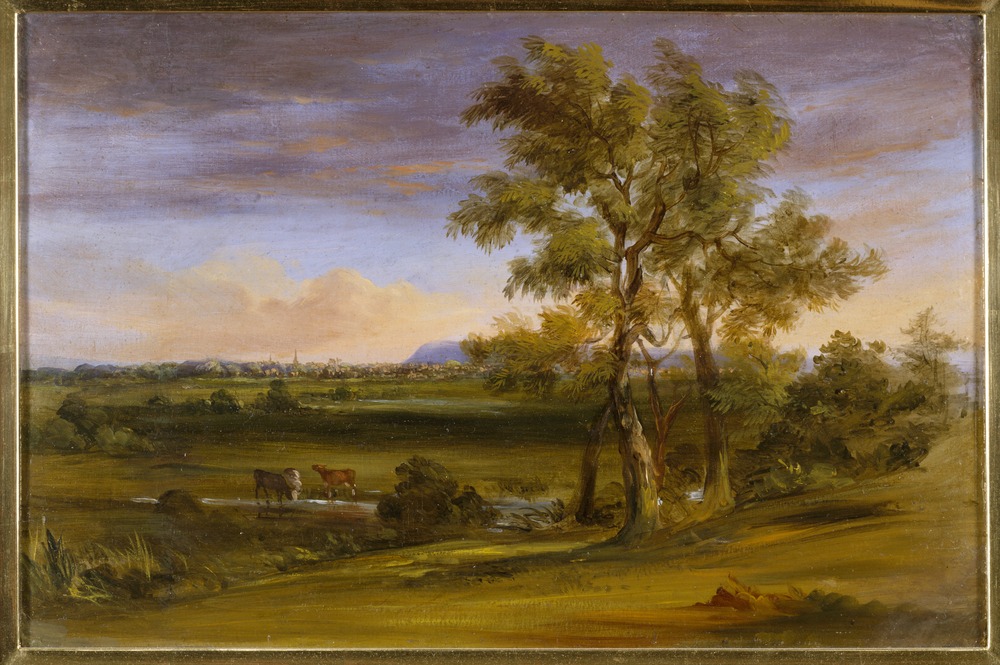
Melbourne from the Botanical Reserve [painted 1884] by Thomas Clark (1814-1883)This view of Melbourne is seen from near the top of the Anderson Street hill in South Yarra. In the distance, Mount Macedon forms a backdrop to the nascent city. The term 'reserve' refers to the land set aside for the extension of the Royal Botanical Gardens. At the time of painting, the boundary of the gardens lined up with Clowes Street which runs off Anderson Street near the crest of the hill. The extension effectively doubled the size of the gardens, moving the boundary to the present-day Birdwood Avenue, close to Domain Road. Clark's viewpoint was one which would become favoured by later artists like Henry Gritten, whose 1867 painting Melbourne from the Botanical Gardens is also in the Library's collection. While Clark's work shows the area in its 'natural' pastoral state, Gritten's painting records the progress of civilisation. It depicts the ordering of nature through the plantings that were determined by Ferdinand von Mueller (1825-96) and his predecessors. Von Mueller was the Government Botanist from 1853 and Director of the Botanical Gardens from 1857. Picture courtesy State Library of Victoria - Image No.: 702600336
Mueller was decorated by many foreign countries, including Germany, France, Spain, Denmark, and Portugal. He was appointed a fellow of the Royal Society in 1861, and knighted as Knight Commander of the Order of St Michael and St George in 1879. A list of his 'Orders, offices, affiliations and sundry honours' has been assembled. Many of his decorations were received in return for supplying zoological specimens to royal museums.
He was the benefactor of explorer Ernest Giles, the discoverer of Lake Amadeus and Kata Tjuta. Giles had originally wanted to name these Lake Mueller and Mt Ferdinand, but Mueller prevailed upon Giles to name them Lake Amadeus, after King Amadeus of Spain, and Mt Olga, after Queen Olga of Württemberg; both kings had granted him honours. In 1871, King Karl of Württemberg gave him the hereditary title of Freiherr, to mark his distinction in 'natural sciences generally and in particular for the natural history collections and institutions of Our Kingdom'. He was then known as Baron Sir Ferdinand von Mueller.
By 1873, influential Melburnians were critical of Mueller's scientific and educational approach with the Royal Botanic Gardens. Development of the gardens with an eye to aesthetics was sought. Mueller was dismissed from his position as director of the Botanic Gardens on 31 May 1873. He had done much to develop the gardens with the scarce resources at hand. Though his pay was not affected and he still continued as the government botanist, he never lost his sense of grievance over losing the position.
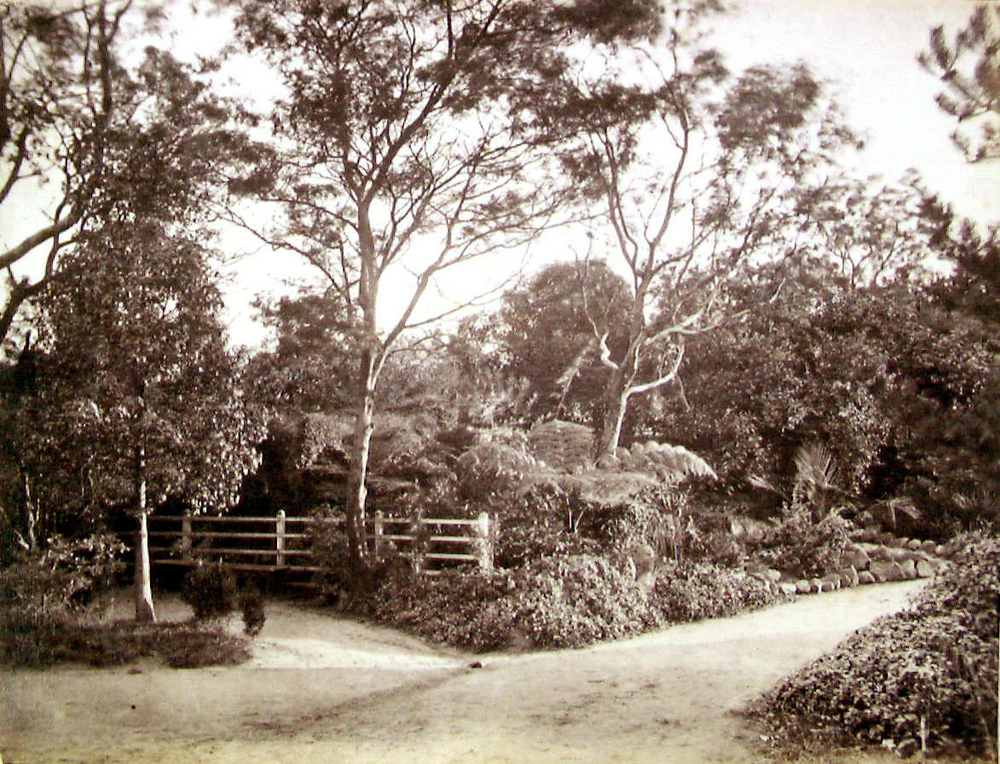
View in Botanical Gardens, circa 1865. from Cumming album of views of Melbourne, Dandenongs, South Australia, New Zealand, Fiji and Shropshire in England. Courtesy State Library of Victoria, Image No.: 1657412
In April 1873, Mueller had created the genus Guilfoylia and described William Guilfoyle as "distinguished as a collector [who] evidenced great ardour" and held high hopes for his collecting ability. Mueller's opinion changed when Guilfoyle was appointed to take his place as director of the Botanic Gardens in July 1873. He accused Guilfoyle of being a "nurseryman [with] no claims to scientific knowledge whatever" and of getting the job due to being related to the wife of the responsible minister. Mueller subsequently abolished Guilfoylia as part of the genus of Cadellia in his botanical census of 1882. Guilfoyle went on to landscape the gardens in an aesthetic and pleasing style welcomed by most Melburnians.
In 1857, Mueller applied for and was granted the degree of Doctor of Medicine of the University of Rostock; in 1883, he was awarded the Clarke Medal by the Royal Society of New South Wales.
He published 11 volumes of Fragmenta phytographica Australiae (1862–1881), two volumes of the Plants of Victoria (1860–1865), and other books on the Eucalyptus, Myoporaceae, Acacia, and Salsolaceae, all profusely illustrated. He also co-operated in the production of George Bentham's Flora Australiensis. He described many novel plant species sent by botanists from other parts of Australia, notably Maurice William Holtze from the Northern Territory, and encouraged settlers to send plants to him. Many women contributed to his collections. He took a leading part in promoting Australian exploration, especially the Burke and Wills expedition, which was the first to cross the continent, and in the various attempts to unravel the mystery which attended the fate of his fellow countryman Ludwig Leichhardt (1813–1848).
Mueller died in Melbourne and is buried in the St Kilda Cemetery. He was survived by his sister, Mrs. Clara Wehl, of Millicent, South Australia. His other sister, Mrs. Bertha Doughty of near Penola predeceased him. He never married.
Ferdinand von Mueller. (2017, April 24). In Wikipedia, The Free Encyclopedia. Retrieved from https://en.wikipedia.org/w/index.php?title=Ferdinand_von_Mueller&oldid=776980361
Top Photo: Baron Ferdinand von Mueller - [ca. 1876-ca. 1884] photo by J. W Lindt (John William) 1845-1926 photographer.Inscription on verso in German, signed "von Mueller 16/1/84". Printed on verso: From J.W. Lindt / photographer ... 7 Collins Street East / Melbourne. Courtesy State Library of Victoria
 Mueller was born at Rostock, in the Grand Duchy of Mecklenburg-Schwerin. After the early death of his parents, Frederick and Louisa, his grandparents gave him a good education in Tönning, Schleswig. Apprenticed to a chemist at the age of 15, he passed his pharmaceutical examinations and studied botany under Professor Ernst Ferdinand Nolte (1791–1875) at Kiel University. In 1847, he received his degree of Doctor of Philosophy from Kiel for a thesis on the plants of the southern regions of Schleswig.
Mueller was born at Rostock, in the Grand Duchy of Mecklenburg-Schwerin. After the early death of his parents, Frederick and Louisa, his grandparents gave him a good education in Tönning, Schleswig. Apprenticed to a chemist at the age of 15, he passed his pharmaceutical examinations and studied botany under Professor Ernst Ferdinand Nolte (1791–1875) at Kiel University. In 1847, he received his degree of Doctor of Philosophy from Kiel for a thesis on the plants of the southern regions of Schleswig.

Southern Oceans Focus Of New $20m Research Centre
May 2, 2017: CSIRO
A new research centre focussed on the role of the Southern Hemisphere oceans in the global climate will be opened today in Hobart, bringing $20 million dollars of funding over five years.The Centre for Southern Hemisphere Oceans Research (CSHOR) is a collaboration between CSIRO, China's Qingdao National Laboratory for Marine Science and Technology (QNLM), with support from the University of Tasmania and the University of New South Wales.
Appearing at the launch via video, the Minister for Industry, Innovation and Science, Arthur Sinodinos said the centre would paly a vital role in climate science in the future.
"The Centre for Southern Hemisphere Oceans Research represents a significant commitment to improving our understanding of the current and future role of southern hemisphere oceans in the climate of Australia, China, and the world," Senator Sinodinos said.
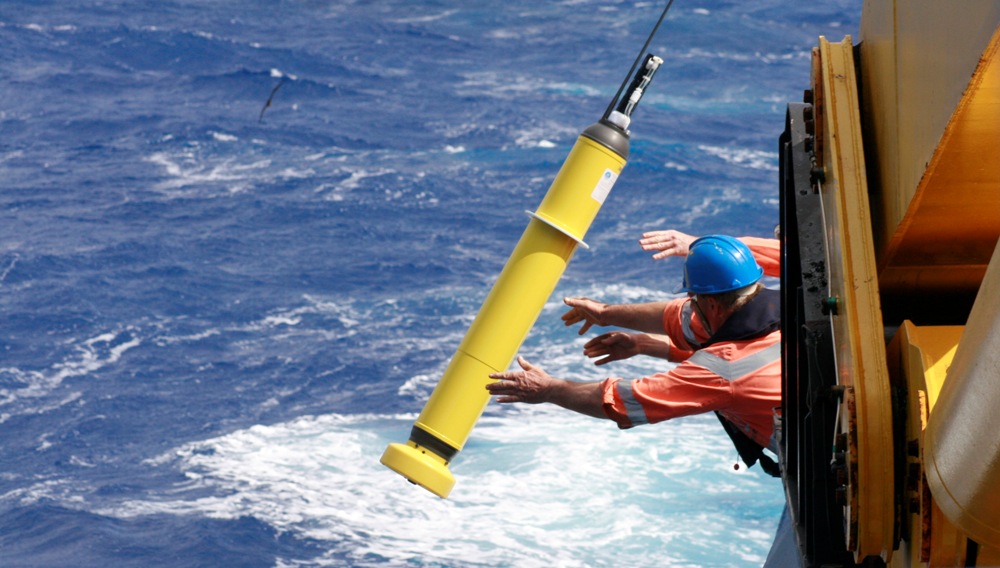
Robotic Argo floats will be used to understand more about ocean warming.
CSIRO Chief Executive Dr Larry Marshall said CSHOR would study the oceans from the tropics to Antarctica, and would tackle fundamental questions about the future climate of Australia, China and the rest of the world.
"The oceans in the Southern Hemisphere play a crucial role in the climate system, absorbing more heat and carbon dioxide than any other region in the world," Dr Marshall said.
"Improving our understanding of the complex science at play in this system, will help us better manage the impacts of climate variability and change at a regional and global scale.
"CSHOR will complement climate research within CSIRO and will sit within our recently announced Climate Science Centre.
"It is also an exciting opportunity to work with China's leading marine science and technology organisation, and cultivate our close research relationship with China, which has been going strong for more than 40 years.
"Often in answering some of science's biggest questions, you need to take a global approach, and that's why as part of our Strategy 2020, CSIRO is working towards becoming a hub for more global collaboration like this."
CSHOR will be based at CSIRO's Marine Laboratories in Hobart and will support seven new research positions, primarily based in Hobart.
Qingdao National Laboratory for Marine Science and Technology Director Professor Lixin Wu said China, just like Australia, was exposed to risks from the changing climate, including future sea level rise.
"Although China and Australia aren't close geographically, many of the southern oceans processes that influence Australia's climate, also influence China's climate," Professor Wu said.
"Importantly, CSHOR will also look at the impact that melting Antarctic ice shelves will have on global sea level rise.
"Since climate change is a great challenge to the whole world, we have to rise to it hand in hand in collaboration.
"QNLM is committed to bringing benefits to our community and people through advancing science and has been focused on its strategy of strengthening coordination and cooperation with scientists around the globe.
"Since both QNLM and CSIRO are two of the world's leading climate research agencies, QNLM expects to work together with CSIRO, in helping China, Australia and the rest of the world to better tackle and adjust to climate changes."
CSHOR will also investigate climate phenomena like the El Niño - Southern Oscillation (ENSO) and the Indian Ocean Dipole (IOD), which have a strong influence on the climate of both Australia and China.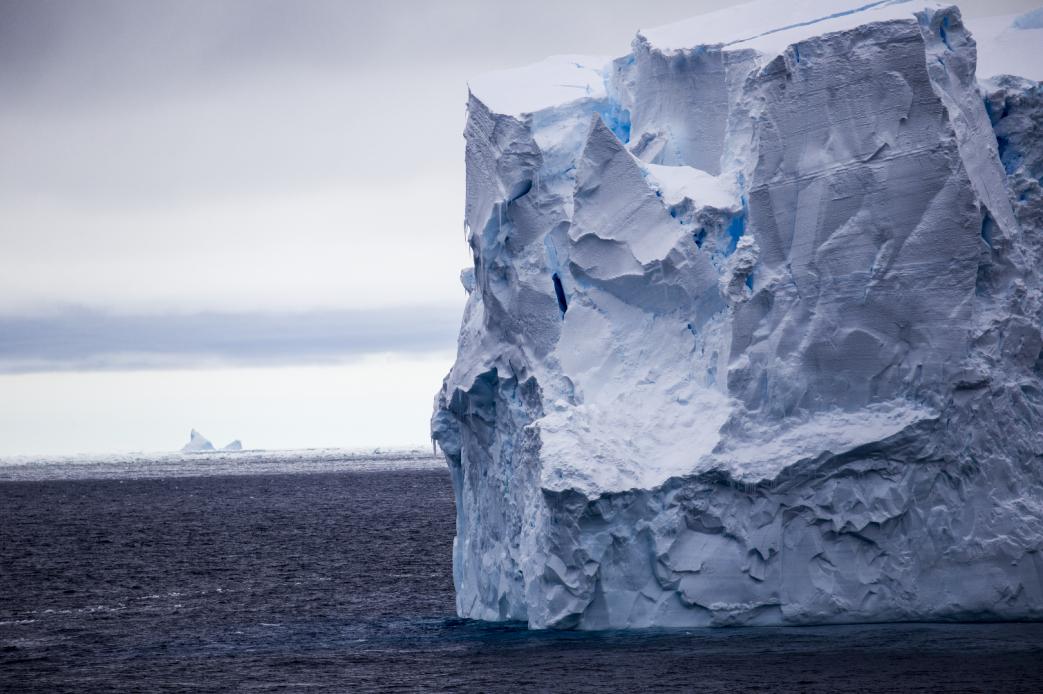 The melting of Antarctic ice sheets and how this impacts future sea level rise will also be investigated.
The melting of Antarctic ice sheets and how this impacts future sea level rise will also be investigated.


Koala Fencing Contract Awarded For Woolgoolga To Ballina Upgrade
22 May 2017: Media Release - NSW Dept. of Roads & Maritime- Contract awarded to provide 10 kilometres of koala fencing on Woolgoolga to Ballina section of Pacific Highway upgrade
- Fencing will reduce koala deaths from road strikes during major work
- Ecologists will carry out pre-clearing surveys to identify koalas within the project corridor
A 10-kilometre stretch of new koala fencing will be built as part of the Woolgoolga to Ballina Pacific Highway upgrade to help keep local populations safe during and after construction work on the project.
Federal Minister for Infrastructure and Transport Darren Chester said the contract to provide the fencing had been awarded to Colemans Group (Aust) Pty Ltd, and was just one of a number of measures being put in place to protect koalas.
“The Pacific Highway upgrade between Woolgoolga and Ballina is the nation’s biggest regional infrastructure project, with the highway on track to be fully duplicated by 2020. As part of the main civil works package, new koala fencing will be put in place as well as fauna connectivity structures to help native wildlife safely cross the new highway,” Mr Chester said.
“These types of projects prove that we can invest in world class infrastructure and protect native wildlife at the same time – a win-win situation for motorists, residents and the local environment.”
New South Wales Minister for Roads, Maritime and Freight Melinda Pavey said fencing would be installed prior to major work along sections of Wardell Road and the existing Pacific Highway between Wardell and Coolgardie to help reduce koala deaths from road strikes during construction.
“Koala specific fauna fencing will be installed on both sides of the new highway at key koala population areas before the upgrade opens to traffic,” Mrs Pavey said.
“About 133 combined and dedicated structures for koalas are planned for the 155 kilometre upgrade, 26 of which are in this area, next to koala hotspots and proposed habitat revegetation areas.
“Ecologists will carry out pre-clearing surveys to identify koalas within the project corridor, including checks by a koala detection dog. The ecologist will also be available during clearing activities and throughout the work.”
Federal Member for Page Kevin Hogan said the Woolgoolga to Ballina project team was targeting a ‘zero harm’ approach to managing koalas during construction of the Woolgoolga to Ballina Pacific Highway upgrade.
“As part of this commitment, all workers will be inducted and trained in koala awareness and management with clear protocols and procedures on how to manage koala incidents on work sites,” Mr Hogan said.
“More than 90,000 trees will also be planted as part of revegetating at least 130 hectares of new koala habitat in the area - this is in addition to the project’s overarching biodiversity offset ratio of preserving about four hectares of land for every one cleared, including for fencing.”
New South Wales Member for Clarence Chris Gulaptis said project vehicles would be restricted to lower speeds in an effort to prevent koala deaths from road strike in the area.
“Project vehicles will be restricted to 80 km/h while travelling on roads between Richmond River and Coolgardie Road, and 50 km/h on Old Bagotville West Road and Back Channel Road. A speed reduction from 100 km/h to 80 km/h has been implemented for the general public on Wardell Road and Old Bagotville Road, areas frequently used by koalas,” Mr Gulaptis said.
“The Woolgoolga to Ballina project team is committed to working with the community and stakeholders to protect wildlife along the Pacific Highway to ensure the highest level of biodiversity protection.”
The Australian and New South Wales governments are jointly funding the Woolgoolga to Ballina upgrade on an 80:20 basis. For more information on the project visit www.rms.nsw.gov.au/W2B.
- Contract awarded to provide 10 kilometres of koala fencing on Woolgoolga to Ballina section of Pacific Highway upgrade
- Fencing will reduce koala deaths from road strikes during major work
- Ecologists will carry out pre-clearing surveys to identify koalas within the project corridor
Experts Convene To Build Reef Resilience
24 May 2017: Media release - The Hon. Josh Frydenberg MP, Minister for the Environment and Energy
The Federal Government remains concerned about the impacts we are seeing to the Great Barrier Reef from global coral bleaching.
In light of recent reports of additional bleaching now more than ever all parties must focus on protecting this iconic environmental asset for its intrinsic beauty and its wider value to the nation.
As a result Reef experts from around the world are currently meeting in Townsville to focus on building the long-term resilience of the Great Barrier Reef.
The two-day Great Barrier Reef Summit—Managing for Resilience showcases the unprecedented collaboration and partnerships that underpin the Australian and Queensland Government’s Reef 2050 Plan - our blueprint for action in a united effort to protect this precious asset.
The Reef 2050 Plan recognises climate change is the greatest threat to the Reef with the purpose of the Plan to boost its health and resilience in order for it to better deal with the effects of climate change.
It is critical for reefs worldwide, including the Great Barrier Reef, that international efforts to reduce greenhouse gas emissions are effective. Australia is taking strong action to address the global threat of climate change having ratified the Paris Agreement which will see Australia reduce its emissions by 26 to 28 per cent on 2005 levels - one of the highest targets on per capita basis in the G20.
While the extent of damage from coral bleaching has not yet been fully quantified, we have already observed significant decline of some parts of the Reef. As we await the outcomes of recent monitoring, we remain hopeful that those sections of the Reef that remain healthy will help seed recovery. The Great Barrier Reef is a large, complex system, made up of around 3000 individual coral reefs - many of which remain strong and healthy.
In addition to the many actions already underway to protect the Reef, such as reducing nitrogen and sediment run off and culling crown of thorns starfish, I have requested advice from the Reef 2050 Plan Independent Expert Panel and the Reef 2050 Advisory Committee on what further action could be taken to respond to recent coral bleaching.
The Australian and Queensland governments are investing more than $2 billion over the coming decade in the Reef 2050 Plan. Complementing this is the Coalition Government’s commitment of $1 billion through the Clean Energy Finance Corporation for projects specifically tackling climate change and water quality.
This summit, hosted by the Great Barrier Reef Marine Park Authority, brings together the world’s best minds on coral reef protection. I welcome the efforts of all involved in it and look forward to receiving their advice on additional strategies to protect the Reef.
Reef Tribute To Marine Park Visionary
May 18, 2017" GBMRPASir Sydney Schubert was a builder of vision and ideals — fostering infrastructure development around the state, as well as the creation of an agency to safeguard the largest living structure on Earth, the Great Barrier Reef.
Now part of that globally-recognised natural wonder will bear the name of the highly respected Queensland public servant, who believed economic development and a healthy environment could co-exist, with the proper frameworks in place.
Great Barrier Reef Marine Park Authority Chairman Dr Russell Reichelt today announced that a reef located about 17.7 km east of Lizard Island will become Sir Sydney Schubert Reef — in memory of the man who skilfully steered the inception of the Authority and became one of its founding board members.
As Coordinator-General and Director General of the Premier's Department, Sir Sydney played a leading role in shaping Queensland’s economic development during the spectacular phase of growth in the 1970s and 80s.
The son of a train driver, equipped with degrees in both engineering and the arts from the University of Queensland, Sir Sydney combined enthusiasm for innovative planning methods with a no-nonsense approach to getting the job done.
“He had an innate drive to ‘see things done properly’,” his daughter Marie-Louise Theile said. “He did not tolerate mediocrity, procrastination or time wasters.”
But he could play the diplomat. It was his exceptional skill at building relationships which came to the fore during the creation of the Marine Park Authority in the mid-1970s.
“His vision was to see all of those interested parties in the Great Barrier Reef work harmoniously and constructively to ensure its safety and preservation, while still allowing it to be an economical and viable asset for those dependent on it for their livelihoods,” Ms Theile said.“Syd worked tirelessly behind the scenes to navigate the agreement that enabled the establishment of the Authority.”
His commitment to the Authority did not end there; Sir Sydney joined the inaugural board of the agency and continued to serve as a board member for more than a decade, helping to guide the organisation during its formative years.
Sir Sydney retired from public service in 1988, but that didn’t slow him down.In 2001, he became the Chair of the Cooperative Research Centre (CRC) for the Reef, as well as the CRC for Tropical Rainforest Ecology and Management. In 2003, he made it a hat trick; assuming the role of Chair of the CRC Torres Strait as well.
“Sir Sydney was a member of the Australian Academy of Technological Sciences and Engineering, and very strongly supported the use of the best available science and engineering for the protection of the Reef and in particular the conduct of sustainable tourism,” said Dr Reichelt, who was an executive member of the CRC Reef during Sir Sydney’s chairmanship.
“In both government and scientific research, Sir Sydney served to protect the Reef for many years. He was a terrific and greatly respected boss.”Sir Sydney relinquished all three posts in 2007, due to ill health. He died in August, 2015, at the age of 87.
A high-flying career garnered him many accolades during his life, including a knighthood in 1985 and an honorary doctorate from James Cook University in 2006, but his daughter remembers him as a humble man who savoured small pleasures.
“Many of his visits to the Reef were work related, however one of our most memorable family holidays was, in fact, on Heron Island.” Ms Theile said.
“Dad was most at home with his toes in the sand, bathers, no shirt, looking out to sea. He was ultimately a man of simple pleasures, who loved nature and the environment.”
Queensland Jobs, Investment And Royalties Boost From New Resource Policy
Media Statement: JOINT STATEMENT
Premier and Minister for the ArtsThe Honourable Annastacia Palaszczuk
Deputy Premier, Minister for Transport and Minister for Infrastructure and PlanningThe Honourable Jackie Trad
Treasurer and Minister for Trade and InvestmentThe Honourable Curtis Pitt
Saturday, May 27, 2017The Palaszczuk Government has unveiled a development policy that will deliver the best deal for Queenslanders and opens up the state to more jobs, more investment and more royalties.
Premier Annastacia Palaszczuk said the policy would unlock development in the Galilee and Surat Basins and the North West Minerals Province and new jobs and new business opportunities.
“State Cabinet has unanimously agreed to a new policy approach for the future development of the Galilee and Surat Basins and the North West Minerals Province,” Ms Palaszczuk said.
“Under this new policy, the Adani Carmichael mine will pay every cent of royalties in full.
“There will be no royalty holiday for the Adani Carmichael mine.
“Opening up these three regions for development has the potential to support thousands of new jobs that are needed in regional centres along the coast as well as in outback Queensland.
“This will squeeze every dollar and every job out of these projects.
“My sole focus this week has been to lead negotiations that ensure Queenslanders get the best deal that will see more jobs and more money flowing into our state.
“This is the right policy that will provide certainty and deliver jobs, royalties and opportunities for years to come.
“It will unlock these resource areas so that projects can proceed and deliver thousands of new jobs for regional Queenslanders.
“The same approach will apply to all greenfield projects in these Basins and the North West Minerals Province such as the Adani Carmichael Coal project.
“Opening up these three regions for development has the potential to support thousands of new jobs that are needed in regional centres along the coast as well as in outback Queensland.”
Deputy Premier Jackie Trad said the Palaszczuk Government’s policy delivered on Labor’s election commitments.
“All royalties will be paid and if they are deferred they will be paid with interest and with security of payment in place,” Ms Trad said.
“That’s more money for our state to spend on infrastructure, renewables, health and education.
“Consistent with our election commitments, cabinet has determined that any NAIF funding needs to be between the Federal Government and Adani.
“There will be a new financial assurance model that ensures operators comply with environmental conditions and cover rehabilitation costs.”
Treasurer Curtis Pitt said the framework provides investor certainty and encourages new development and business opportunities in the Basins and the North West Minerals Province.
“Investors accessing the new resources framework will be required to provide jobs, common-user infrastructure and have a positive impact on the state’s finances,” Mr Pitt said.
“This revised model will apply to future resource development proposals in the three regions and will replace ad hoc arrangements negotiated in the past.
“It is a transparent policy framework that will apply equally to project proponents looking to invest in these under-developed resource regions.”
All greenfield projects approved after the completion of comprehensive environmental impact assessments by State and Commonwealth agencies will abide by the following principles:- all royalties due to the State are paid over the term of any agreement (inclusive of interest foregone costs), with security of payment and no adverse budget impact to the state;
- any agreement with a proponent will not involve the direct expenditure of public funds in the project or in directly‑related economic infrastructure for that project (noting that Government Owned Corporations (GOCs) may still supply economic infrastructure on commercial terms to resource project proponents);
- the provision by the proponent of third party access infrastructure or other acceptable economic infrastructure to the State; and
- projects must have significant regional employment, generation of royalties and economic opportunity benefits, such as the potential to assist in opening up undeveloped resource basins.
- all royalties due to the State are paid over the term of any agreement (inclusive of interest foregone costs), with security of payment and no adverse budget impact to the state;
- any agreement with a proponent will not involve the direct expenditure of public funds in the project or in directly‑related economic infrastructure for that project (noting that Government Owned Corporations (GOCs) may still supply economic infrastructure on commercial terms to resource project proponents);
- the provision by the proponent of third party access infrastructure or other acceptable economic infrastructure to the State; and
- projects must have significant regional employment, generation of royalties and economic opportunity benefits, such as the potential to assist in opening up undeveloped resource basins.
$1.5 Billion Upfront Cash Bond Needed For Adani Mine Rehabilitation Liability – Report
May 24, 2017: Media Release - Lock the GateNew analysis by Lock the Gate Alliance released today estimates that it would cost at least $1.5 billion to rehabilitate the Adani Carmichael coal mine in Central Queensland.
The detailed analysis has been undertaken using publicly available documents regarding the planned rehabilitation and closure strategy proposed by Adani Mining and applying the Queensland Government’s standard financial assurance calculator plus a contingency.
The Alliance is calling for the bond to be paid upfront, to prevent Australian taxpayers bearing all the risks because Adani Mining Pty Ltd is in a parlous financial position and is only solvent due to support from its parent company in India.
“There is a massive risk that Australian taxpayers will be left to cover the costs of part or all of the rehabilitation of the Adani coal mine,” said Carmel Flint, spokesperson with Lock the Gate Alliance.
“We estimate that the financial assurance required for the first five years of the full 60Mtpa mine plan should be at least $1.5 billion in order to protect taxpayers from financial risks”.
Although there has been speculation that Adani is contemplating ‘downsizing’ the project, it is the 60Mtpa mine that has been approved and as far as Lock the Gate can ascertain there has been no revised proposal submitted.
“We believe that the Queensland Government should require that Adani Mining pay the amount as an upfront cash bond, to prevent taxpayers ending up with the bill.
“It is crucial that the financial assurance is calculated in a precautionary manner, in order to protect Queenslanders from major financial risks.
“If Adani Mining are not required to put up an upfront cash bond, then the costs of rehabilitation will effectively be another massive subsidy from taxpayers to enable Adani Mining to commence a mine that will leave a far-reaching environmental legacy,” she said.
The analysis by the Lock the Gate Alliance should be considered a conservative estimate, as it only takes account of some elements of rehabilitation such as open cut voids and slopes, out of pit dumps, tailings dams, mine affected water dams and stream diversions.
The Queensland Government has started a reform process for mining rehabilitation, and Lock the Gate is calling on it to deliver on that for the Adani Carmichael mine.
The Queensland Government should require that: Detailed transparent analysis be undertaken before the mine’s Plan of Operations is signed off by the Department of Environment and Heritage Protection
Financial assurance are calculated using transparent processes based on best practice standards with independent expert reviewThere should be no financial assurance discounts for Adani Mining and they should not be allowed to use their own financial assurance calculatorThe mine Plan of Operation must require the company to restore the original contour of the land, prohibit final voids and undertake progressive rehabilitation.
New Species Of Bus-Sized Fossil Marine Reptile Unearthed In Russia
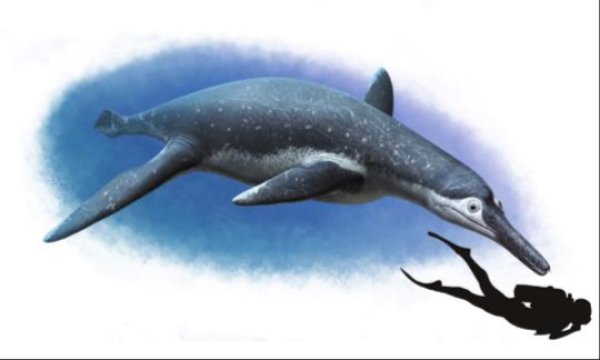
Free Winter Flu Jabs Nothing To Sneeze At
- Cover your face when you cough or sneeze
- Throw away used tissues straight away
- Clean your hands thoroughly and often
- If you are vulnerable to severe influenza see your doctor as soon as flu symptoms start as early treatment of flu can help prevent complications.
Independent Expert Panel To Begin Mental Health Review
- Dr Kevin Huckshorn, CEO, Huckshorn and Associates
- Karen Lenihan, NSW Principal Official Visitor
- Julie Mooney, Executive Director of Nursing and Midwifery for Southern NSW LHD
- Dr Robyn Shields, Deputy Commissioner at the NSW Mental Health Commission
- Ms Jackie Crowe Deputy Commissioner of the Australian Mental Health Commission.
Designer Worm Spit Supercharges Healing
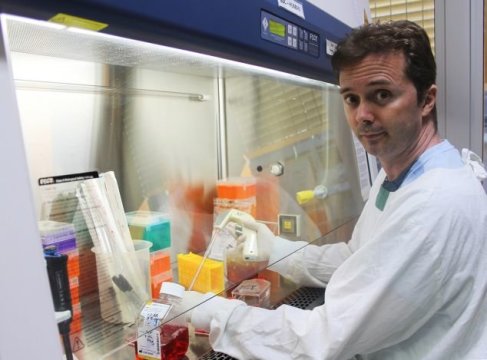
National Plan For Elite Sport And Participation
Celebrating Reconciliation Week
New Approach For Autism
Sleep Disorders Affect Men And Women Differently
Delivering $33 Million To Help Fund Our Next Medical Breakthrough
States Need To Put Energy Consumers First
Statement To Parliament On The 50th Anniversary Of The 1967 Referendum And The 25th Anniversary Of The Mabo Decision
UNSW And The George Institute Mark New Era In Australian Health Research
ASKAP Telescope To Rule Radio-Burst Hunt
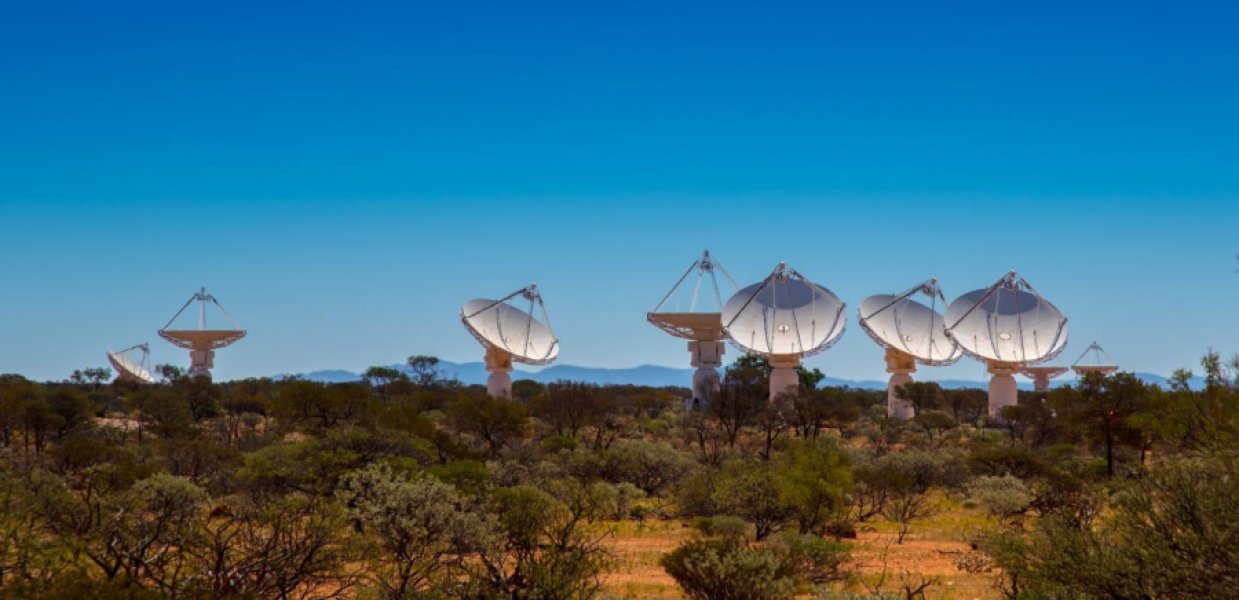
Securing The Future Of Australian And Children’s Screen Content
Calling Koala Spotters In Blue Mountains And Hawkesbury
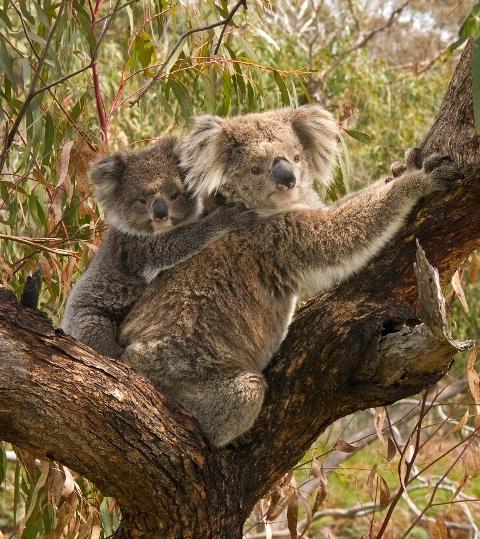
Have Your Say On NSW Government's Biodiversity Reforms
- a draft principal Biodiversity Conservation Regulation and its supporting regulatory impact statement
- a draft Local Land Services Amendment Regulation
- a draft Environmental Planning and Assessment Amendment (Biodiversity Conservation)Regulation
- an Explanation of Intended Effects for a State Environmental Planning Policy (Vegetation)
- a draft Land Management (Native Vegetation) Code
- a draft Biodiversity Assessment Method and BAM tool (Link)
- a draft Accreditation Scheme for the Application of the Biodiversity Assessment Method
- an example of a Sensitive Biodiversity Values Land Map
- draft guidance for considering serious and irreversible impacts
- a draft offsets payment calculator and user manual.
Have Your Say On First Cottan-Bimbang National Park Draft Plan Of Management
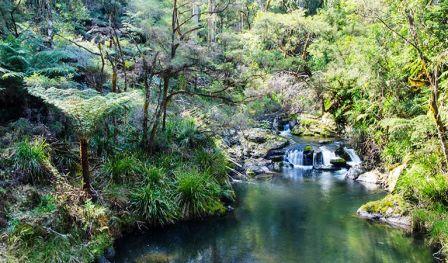
- Gingers Creek Café on the Oxley Highway between Walcha and Wauchope
- NPWS Office, 22 Blackbutt Road Port Macquarie, 2444, NSW
- NPWS Office, 78 Hargreaves Drive, Taree, 2430, NSW
- NPWS Office, 188W North Street Walcha, 2354, NSW
- OEH Customer Centre (Level 14, 59-61 Goulburn Street, Sydney)
- OEH 'Have your say' website athttps://engage.environment.nsw.gov.au- Cottan-Bimbang National Park group draft plan of management
Citizen Science Checking Bellinger River Water Quality
Applications Open For Threatened Species Recovery Fund
Review Of Complying Development In Greenfield Areas
Bird Walks And Talks 2017: PNHA

Barangaroo Public Consultation
2017 Eco Schools Grants Program Open For Applications
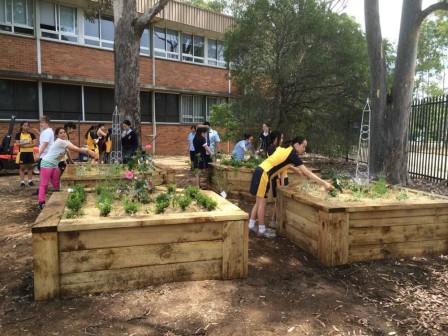
Sydneysiders Urged To Listen Out For 'Powerful Owls'
Department Seeks Community Input On Hume Coal Project Proposal
Call For Public Comment On Draft Seabird Threat Abatement Plan
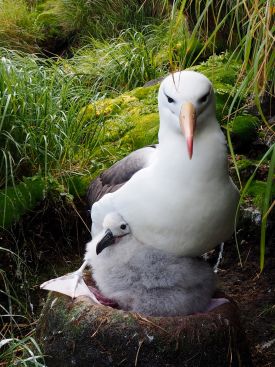
Avalon Boomerang Bags 2016 Workshops
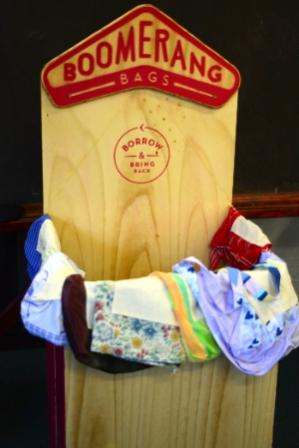 Boomerang Bag Working Bees run in Mona Vale onTuesdays 11:30am- 5pm.
Boomerang Bag Working Bees run in Mona Vale onTuesdays 11:30am- 5pm.
For those of you unable to come to workshops there are many other ways to get involved, just let us know you're willing by leaving a comment or sending us a message.
Pictured is a Boomerang Bag Box.
The boxes are located at:
A huge thank you to everybody who has helped Boomerang Bags Avalon get this far. But the work is not over yet. Materials and more hands always welcome Facebook page Profile
Newport Community Gardens
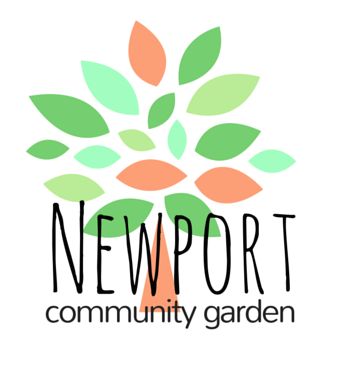
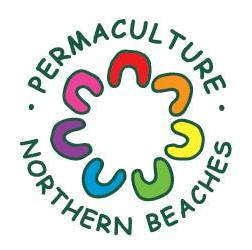 Want to know where your food is coming from?
Want to know where your food is coming from?
Do you like to enrich the earth as much as benefit from it?
Find out more here:
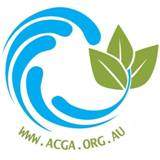 Avalon Community Garden
Avalon Community Garden
Community Gardens bring people together and enrich communities. They build a sense of place and shared connection.
Avalon Community Garden is a community led initiative to create accessible food gardens in public places throughout the Pittwater area. Our aim is to share skills and knowledge in creating fabulous local, organic food. But it's not just about great food. We also aim to foster community connection, stimulate creative ideas for community resilience and celebrate our abundance. Open to all ages and skills, our first garden is on the grounds of Barrenjoey High School (off
www.pcga.org.